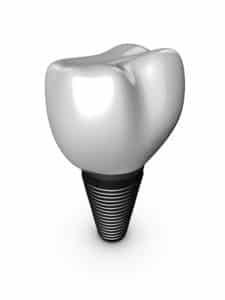 Considering the necessity of teeth to eat and speak properly, it should be no surprise that the quest to replace lost or extracted teeth is an ancient one. However, today’s methods and materials are far more advanced than our ancestors could have imagined. Innovative dental porcelain can closely mimic the natural light-reflecting properties of your tooth’s enamel. Also, dental implants can even restore the roots of your lost teeth for sturdier replacements and improved jawbone preservation. Today, we explore the milestones that have led to dental implants and today’s advanced and lifelike teeth replacements.
Considering the necessity of teeth to eat and speak properly, it should be no surprise that the quest to replace lost or extracted teeth is an ancient one. However, today’s methods and materials are far more advanced than our ancestors could have imagined. Innovative dental porcelain can closely mimic the natural light-reflecting properties of your tooth’s enamel. Also, dental implants can even restore the roots of your lost teeth for sturdier replacements and improved jawbone preservation. Today, we explore the milestones that have led to dental implants and today’s advanced and lifelike teeth replacements.
The History of Tooth Replacement
- During the excavation of a Mayan burial site in Honduras in 1931, the fragment of a mandible (lower jaw) was uncovered that contained three tooth-shaped pieces of shell where three incisors should have been. At first, experts believed the shells were placed after death in some sort of post-mortem ritual. However, in 1970, Professor Amadeo Bobbio of Brazil studied the specimen through a series of radiographs. He discovered compacted bone formation around two of the shells, leading him to believe that they were in fact the earliest example of dental implants.
- The discovery of titanium’s biocompatibility and advantageous use for tooth replacement occurred by fortunate accident. In 1952, Swedish orthopedic surgeon, Per-Ingvar Brånemark, became interested in bone healing and regeneration. He adopted a method used in a Cambridge study that involved placing a titanium chamber in the soft tissues of rabbits’ ears to study blood flow in vivo. For his study, Brånemark introduced these titanium chambers into the rabbit femur. After several months, he attempted unsuccessfully to retrieve the chambers, only to find that bone had essentially fused to the chambers’ surfaces (he termed the phenomenon “osseointegration”). In 1965, Brånemark placed his first titanium dental implant into a human volunteer.
- Today, titanium dental implants are the best option for replacing lost teeth, and can support any size dental prosthesis, from a single dental crown to a complete set of full dentures. By replacing your tooth’s roots, you can help preserve the health of your jawbone, which relies on stimulated tooth roots for your body to send it an adequate supply of nutrients.

